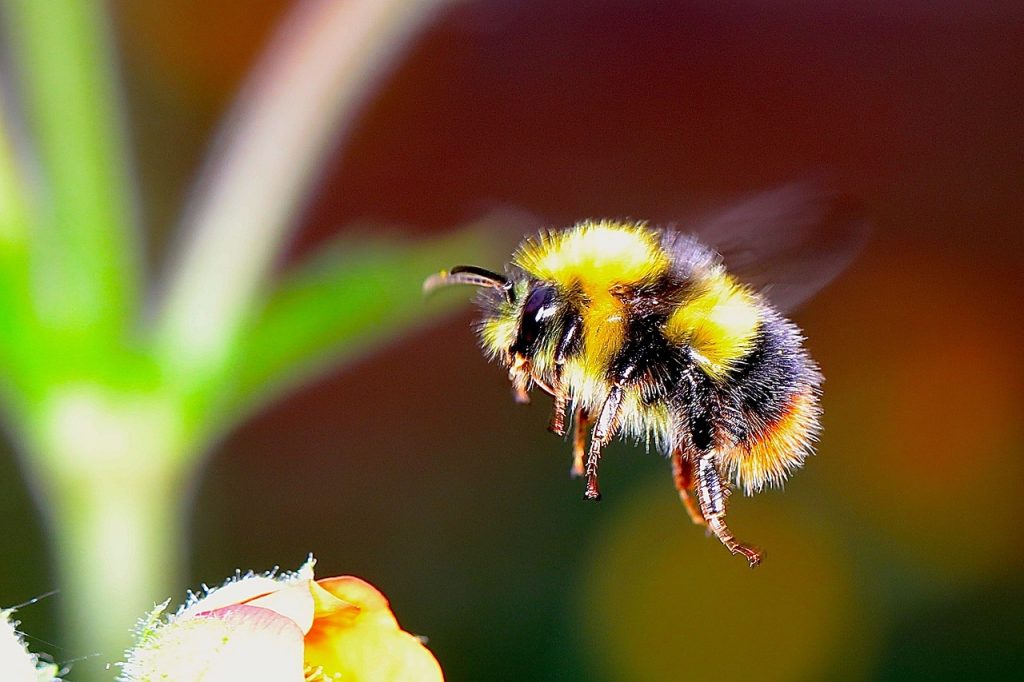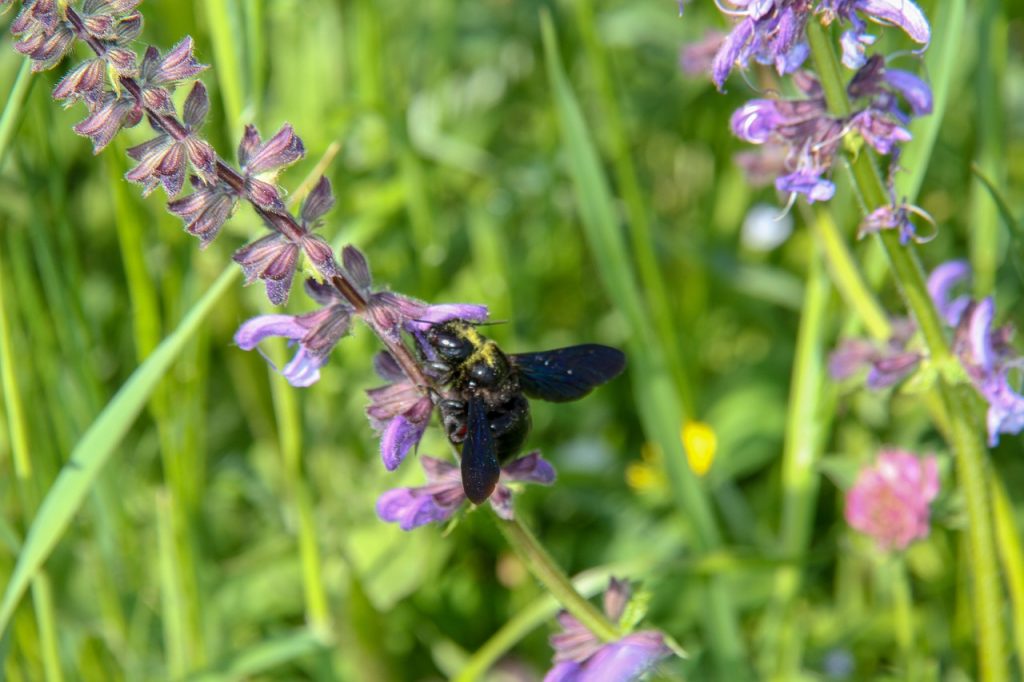California Bees: Bumblebees and Carpenter Bees

How many species of bees can be found in California? If you guessed over one thousand, you are correct! There are more than one thousand species of bees in our state. Most of them are considered solitary bees, ones that do not live together in colonies. The rest are considered bumblebees.
There are several species that are much more common than the others: bumblebees, European honeybees, Africanized honeybees and carpenter bees. Today we will talk about two of the species that are often mistaken for each other: bumblebees and carpenter bees.
Let’s learn more about these species so you can better identify them this summer.
How to Identify Bumblebees and Carpenter Bees
Bumblebees (genus: Bombus)
There are 49 species of bumblebees living in the United States. They get their name from the noise they make when inside a flower! Bumblebees usually live in nests of about 15 to 100 bees. But they don’t make their homes in the beehives that we usually see hanging from branches or in the eaves of a roof. Bumblebees make their nests in the ground in unused holes from mammals or in other low-lying locations.
Bumblebees pollinate a variety of flowers and are specifically beneficial for tomato farmers. And although they can sting, bumblebees rarely do. But be careful – if you handle them or get too close to their nest, they can become aggressive, stinging you several times.
Bumblebees are twice as large as honeybees. They have thick black and yellow hair covering their bodies and look sort of fuzzy. When collecting pollen, they actually use the sound of their wings to transfer the pollen from the flower to their bodies and into the pollen baskets that are found on their legs.
Bumblebee Stats:
- Size: 1 to 1 ½ inches in length
- Hair: fuzzy yellow and black hair, including on abdomen
- Sting: yes, but rare unless provoked
- Pollination: yes, a variety of flowers and crops, especially tomatoes
- Colony Size: 15 to 100 bumblebees
Carpenter Bees (genus: Xylocopa)
Carpenter bees are known to be docile yet destructive. These bees get their name because they make holes in wood in order to build their nests. You may commonly see these holes in dead wood and wooden structures like sheds. A telltale sign of a carpenter bee nest? A pile of sawdust under a perfectly drilled hole!
Carpenter bees also have another behavior that is not liked by many. Due to their size (they are about 1 inch in length), they cannot fit into many smaller flowers to gather nectar. But instead of moving on to larger food sources, they chew tiny holes in the side of the flowers, removing the nectar for their meal. The downside to this? They are not participating in pollination by sneaking the nectar out of the side door!
Carpenter bees look very similar to bumblebees, which is why they are often confused. They have the same thick black and yellow hair; however, carpenter bees do not have any hair on their abdomens. Instead, they have a black and shiny abdomen.
Carpenter Bee Stats:
- Size: about 1 inch in length
- Hair: fuzzy yellow and black hair, no hair on the abdomen
- Sting: females can sting but rarely unless provoked; males do not have stingers
- Pollination: yes, a variety of crops such as tomato and eggplant
- Colony Size: solitary bees, they do not live or work in colonies
Hopefully, you can now tell the difference between a bumblebee and a carpenter bee. Although they look similar, the appearance of their abdomens is the key to telling these bees apart. Both of these species of bees are harmless unless provoked.
If you feel that your bees are causing a nuisance or safety hazard, be sure to call the professionals at D-Tek Live Bee Removal rather than attempting to remove them yourself. The expert bee removal technicians at D-Tek Live Bee Removal can assess your bee situation and recommend the best course of action.
Call us today for a FREE quote! Our team is standing by to help you manage your bee problem safely and humanely.

